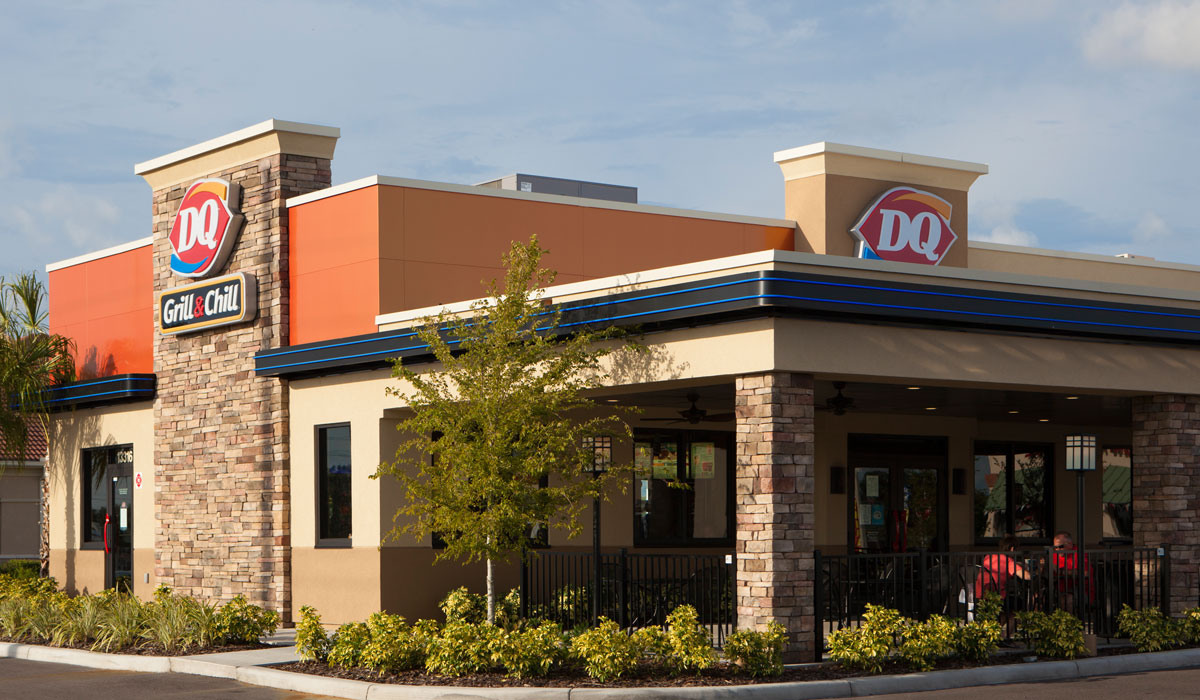For almost eight decades, Dairy Queen has been a leader when it comes to frozen treats. With almost 7,000 units, the brand has refined its growth strategy over the past few years to focus on specific markets and open more Grill & Chill restaurant models rather than the traditional frozen treat side.
Two years ago, Dairy Queen opened 82 locations in the U.S., and all but one of those was a DQ Grill & Chill restaurant. “Our food business across the U.S. has improved plus 40 percent over five years. We definitely have a high-quality dessert product and we have a high-quality food product,” said Jim Kerr, executive vice president of development, at the time. From 2016–2017, Dairy Queen trimmed its U.S. unit count by 62 to total 4,455 stores (all but two are franchises).
To help propel the Grill & Chill side of the brand even further, Dairy Queen recently brought on Julie Davis as its new franchise development director. With more than 20 years of experience under her belt, Davis believes her knowledge of the franchising industry will help Dairy Queen’s growth in the future.
Having worked for brands like Schlotzsky’s, Popeyes, Dunkin’, and Einstein’s Bros. Bagels, Davis’ knowledge of franchising touches on everything from real estate to franchise law, all of which will help accelerate Dairy Queen’s expansion in the right direction.
“It’s just absolutely the dream job for me,” she says. “It’s just very intellectual—you know you have to be very knowledgeable about economics, franchise systems, franchise law. Then you really get to interact with the best people who are looking for their piece of the world where they can leave a legacy with a brand, but also a legacy for their family.”
Despite being known for its frozen Blizzard treat, Dairy Queen has seen tremendous growth from the Grill & Chill model. Moving forward the brand will lean even further into the design. The same is true of franchisees. For Davis, this model is the most beneficial for franchisees when it comes to opportunities and growth within specific units.
“Funny enough, the Grill & Chill is our main growth engine, but it’s actually been around for almost 20 years, but it is our main growth project [now],” Davis says.
There’s nothing wrong with the chill model, either, Davis says. “That’s a model that is tried and true, and well oiled. So, when something works as well as it does you just kind of make sure you’re bringing innovation into the kitchen and innovation into the products to continue to delight our fans,” she adds. “The chill, treat-only stores are folks that are more of our legacy franchisees that have been around and are the backbone of what built this entire brand.”
In other words, the frozen-treat store model will always be a part of Dairy Queen, but in order for Dairy Queen to capture customers on a daily basis and compete with other quick-serves, it must expand its everyday offerings.
“It’s just an evolution and with the competitive nature and the cost of real estate and the competitiveness to be able to grab that real estate and being able to offer a thorough menu that offers two dayparts, both lunch and dinner, as well as those treat visits really drives your unit volume to support that local unit-level economics,” Davis says.
“In this business, it’s about transactions, so the more opportunity we can invite our fans and our guest into our restaurants increasing those transactions for our franchisees is a win,” adds Davis.
Recruitment of franchisees is still a nationwide task, however, heading into 2019. Davis says Dairy Queen decided to focus on expansion in emerging markets across the U.S. Some of these markets already have a DQ presence. In others, it will be new territory for the brand.
Dairy Queen’s target list of markets that are on the top of the list when opening new Grill & Chill’s include: Sacramento, California; Charlotte, North Carolina; Orlando, Florida; Rochester, New York; and Austin, Texas.
“These great areas that offer a lot of growth opportunity and multi-unit opportunity as well,” Davis says. “We’re going to be very focused and targeted in our recruitment and in a lot of those markets we’ll be driving for those markets, but still be building in all of the others.”
These emerging markets will allow Dairy Queen the opportunity to fully saturate an area.
“Take for example in the Boston area. We have several restaurants, but by far we have so much opportunity to scale to even reach penetration,” Davis says. “So, there’s large opportunities where we have some footholds in, but we’re not a brand powerhouse in those markets and we have great opportunity to grow there.”
Along with new footholds in the emerging markets, Dairy Queen hasn’t forgotten about the menu. DQ’s research and development team is currently testing new products on both the frozen treat and food side that will roll out over the next year.
“We have our core menu and then as any brand we have a really robust R&D pipeline of new products,” Davis says. “Looking at the marketing calendar through 2019 you know we have so many of our products planned out based on regionality and also seasonality, so there’s so much exciting and awesome things to come both on the food side and treat side. One of the most dynamic things about Dairy Queen is just the thoughtfulness that goes into product development so far in advance. Because of our supply chain because we are so large, we want to make sure we have everything rolled out and planned for a food delivery of any type of new product into our franchise system.”







